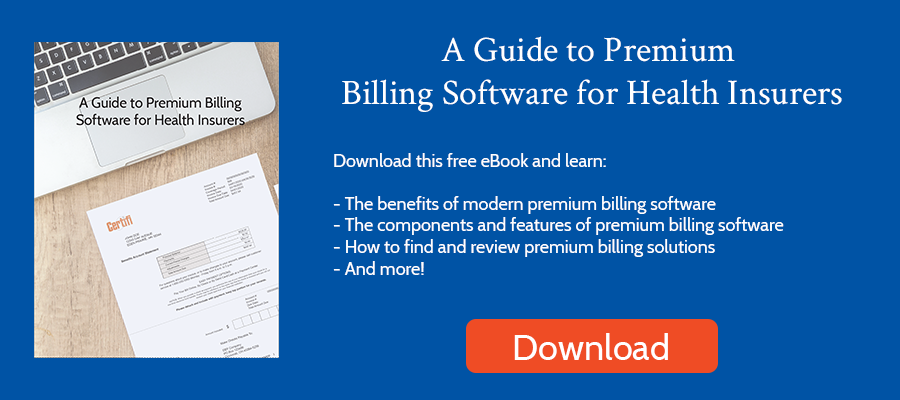In the ever-evolving health insurance landscape, embracing technological advancements is not just an option but a necessity. Health plans continue to embark on one such transformative journey: transitioning to cloud computing. This paradigm shift is not merely a technical upgrade; it is a strategic move that promises operational efficiency, enhanced security, and even improved patient outcomes.
Let’s look at the steps health plans can take to transition into cloud computing.
Understanding the Cloud Advantage
We previously wrote about the benefits of cloud computing in Health Insurance Technology Trends: Cloud Computing. The benefits of transitioning to cloud computing include:
Scalability and Flexibility
Cloud computing allows health plans to scale up or down based on the fluctuating demands of their operations. Whether it’s accommodating more data, more computing power, or supporting more users, the cloud provides flexibility that traditional systems often struggle to match.
Cost-Efficiency
Traditional on-premise infrastructure involves substantial upfront costs and ongoing maintenance expenses. Cloud computing, on the other hand, operates on a pay-as-you-go model, enabling health plans to optimize costs by paying only for the resources they consume.
Consider your premium billing platform. Generating premium billing transactions can take considerable computing resources, but you only need them once a month. Cloud computing makes it easy to scale up to meet that demand and then scale down during the rest of the month, reducing costs while improving turnaround time.
Data Security and Compliance
Security is paramount in healthcare, and cloud providers invest heavily in robust security measures. Leading cloud platforms offer encryption, identity management, and compliance certifications, ensuring that health plans meet the stringent regulatory requirements of the healthcare industry.
Steps Towards a Seamless Transition
Assessment and Planning
Before a cloud transition, health plans must assess their current infrastructure, applications, and data. First, identify the suitability of components for migration. Then, create a detailed migration plan.
Health plans often conduct a market assessment to understand which vendors have cloud-enabled products. Gartner offers good resources to understand emerging technologies and the vendors available.
Health plans should also prioritize those functions that lead to the greatest return. That may be financial or linked to corporate goals, like member satisfaction. Choose those projects that will lead to the greatest improvement first.
Choose the Right Cloud Model
Health plans can opt for public, private, or hybrid cloud models based on their specific needs. Public clouds offer cost-effectiveness, private clouds provide enhanced security, and hybrid solutions offer a blend of both.
Microsoft offers a resource that further defines each of those cloud models that can be useful for health plans to review.
Consider Data Migration and Integration
Migrating vast amounts of sensitive healthcare data requires careful planning. Health plans should prioritize data integrity, minimize downtime, and ensure seamless integration with existing systems.
For many health plans, transitioning to cloud platforms enables them to consolidate duplicative systems patched together after mergers or acquisitions.
Data integration is also a key priority. Regulatory bodies like the Centers for Medicare and Medicaid Services (CMS) are beginning to mandate interoperability and transparency requirements that can be easier to implement with cloud platforms with robust APIs. If transitioning to cloud partners, ensure they can support the near real-time activities that governing bodies, providers, and consumers increasingly expect.
Challenges and Mitigation
Security Concerns
While cloud providers invest heavily in security, health plans must actively manage access controls and encryption, and regularly update security protocols. Collaborating with experienced cloud security experts is crucial.
Legacy System Integration
Many health plans have legacy systems that may not seamlessly integrate with cloud solutions. A phased migration focused on interoperability can address these challenges.
Talent Acquisition
For internally developed applications, you may need to upskill or hire resources familiar with cloud platforms and development. Acquiring and training these resources may take time and be costly.
Benefits Realized
Enhanced Collaboration
Cloud platforms facilitate real-time collaboration among health insurance and healthcare professionals. Collaboration is particularly crucial in scenarios where multiple stakeholders need access to patient data. Near real-time data interoperability can improve relationships.
Innovations Like Predictive Analytics and AI
Cloud computing provides the computational power required for advanced analytics and artificial intelligence. Health plans can leverage predictive analytics for better resource allocation, identifying high-risk members, and improving overall population health.
AI has a plethora of use cases, ranging from claims processing to prior authorization, that can save time, improve accuracy, and free staff from mundane tasks. Cloud computing enables technology teams to scale resources and leverage AI applications.
Speed to Market
Cloud computing helps expedite speed-to-market for health plans, offering an edge in competitive markets. With traditional infrastructure, launching new services or deploying innovative solutions involves extensive lead times and resource allocation.
In contrast, the cloud’s on-demand scalability enables health plans to swiftly provision and deploy resources, minimizing the time required for development and testing. This agility is crucial, especially in an industry where rapid adaptation to emerging technologies and changing regulations is imperative.
Cloud solutions empower health plans to streamline their workflows, optimize operational efficiency, and accelerate the delivery of new products or services to the market. By leveraging the cloud’s flexible and scalable architecture, health plans can respond nimbly to evolving market demands, ensuring that they not only keep pace with technological advancements but also stay ahead in delivering impactful and timely solutions to their beneficiaries.
Conclusion
The transition to cloud computing is not just a technological upgrade; it’s a strategic imperative for health plans looking to stay competitive in a rapidly evolving healthcare landscape. The benefits of scalability, cost-efficiency, and enhanced security are too significant to ignore. However, successful adoption requires meticulous planning, a focus on compliance, and a commitment to ongoing security measures. As health plans journey into the cloud, they’re not just embracing a new technology, they’re shaping the future of healthcare delivery.
Certifi’s health insurance premium billing and payment solutions help payers improve member satisfaction while reducing administrative costs.



